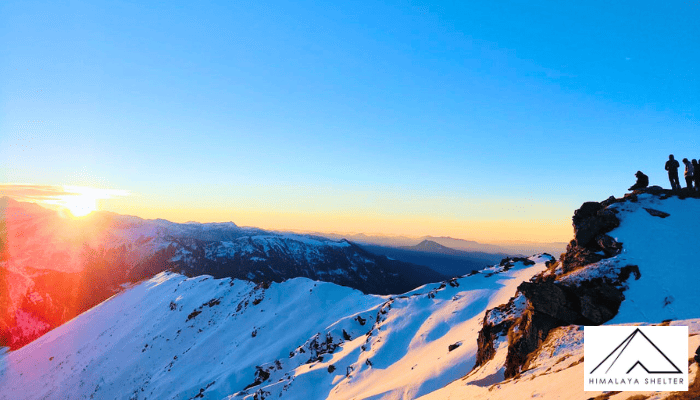
The Cultural Landscape of Garhwal Himalayas : Beyond the Peaks
Endless words come to rescue when describing the beauty of Garhwal Himalayas, yet one needs to visit the paradise to experience the charm of it.
Walking through the forests and valleys, the trails beckoned me; to know them more; to explore the treasure that lies beneath the gaze of Himalayan skies. The treasure of rich culture indeed!
The Rhythms of Tradition and Festivals
Garhwal culture is intrinsically tied to its festivals. The festivals that bloom like the spring flowers, and I dream to watch them all bloom...
Nanda Devi Raj Jat Yatra:
When: Once in every twelve years in the Chamoli District of Garhwal Region. Significance: A sacred pilgrimage dedicated to Goddess Nanda Devi, blending spirituality, endurance, and cultural pride.
Phool Dei Festival:
When: First day of the Hindu month, Chaitra.
Significance: It is celebrated to symbolize the blossoming of nature. The term 'Dei' refers to a sweet pudding which is the key food in this festival that is made from jaggery. White flour and curd are also offered to everyone.
Kumbh Mela:
When: Once in 12 years.
Significance: Kumbh Mela is one of the largest and most spiritually significant gatherings in the world. It is held at four sacred sites in India—Prayagraj (Allahabad), Haridwar, Ujjain, and Nashik. This festival rotates every 12 years at each location, based on astrological alignments.
Magh Mela:
When: Held in January during Makar Sankranti.
Significance: The festival marks the transition of the sun into Capricorn and is considered auspicious.
Ramman:
When: Every year in late April
Significance: It is a UNESCO-recognized religious festival in the twin villages of Saloor-Dungra. A religious festival is celebrated in honour of the tutelary god, Bhumiyal Devta, a local divinity whose temple houses most of the festivities.
Harela:
When: Celebrated in July, during the monsoon season.
Significance: The connection between family, nature and farming is celebrated with this festival. Symbolic seeds are sowed in the small baskets to reinforce this connection.
Bissu Mela:
When: During the spring season, typically in April
Significance: It is a harvest festival in Chakrata. Traditional music, dance, and dishes highlight the celebration of this festival.
Music, Dance, and the Soul of Garhwal
The music and dance of Garhwal hold a special place in its culture, serving as a medium for storytelling, emotional expression, and celebration. Instruments like the dhol, damau, and turai add soul to the folk dance and music.
Garhwali dances are as much a part of the cultural fabric as the music. They are performed during festivals, and other celebrations, showcasing joy and community spirit.
- Pandav Nritya: This unique dance narrates episodes from the Mahabharata and is performed as a spiritual offering during religious gatherings.
- Baradi Nati: It is a popular folk dance of Garhwal, performed by synchronized group movements. The performers wear vibrant clothes to add color to the performance. It is performed during weddings and festivals.
- Langvir Nritya: It is a thrilling dance form where a single performer executes acrobatic moves on a bamboo pole. The dance form symbolizes strength and agility.
The Exotic Flavors of Garhwal Himalayas
Garhwali cuisine highlights use of locally available ingredients, as per the terrain and climate of the Himalayas. The dishes are often made using lentils, coarse grains like mandua (finger millet), and seasonal vegetables. The simplicity in every bite is the one thing I crave for as I write about the dishes.
Kafuli: It is a wholesome and aromatic dish made with leafy greens like spinach and fenugreek, with a touch of mustard seeds.
- Chainsoo: Roasted black gram curry that packs a punch, offering warmth in the cold mountain weather.
- Phaanu: It is a rich lentil-based stew that combines different pulses, giving it a unique texture and flavor.
- Arsa: A delightful sweet dish prepared with jaggery and rice. It is perfect for celebrations. Garhwal ka Fanna: It is a lentil-based delicacy, famous in Mussoorie.
So, pack your bags and let the Garhwal Himalayas fill your soul with wonder!
Quick Facts of Garhwal Himalayas:
- Geography: It is a part of western Himalayas. The famous peaks include the Nanda Devi Peak, Kamet, Mana Peak
- Pilgrimage Sites: Char Dham Yatra, Panch Kedar, Tungnath temple, Triyuginarayan Temple, Haridwar, Hemkund Sahib, the Panchprayag
- Adventure: Famous treks like Kuari Pass, Brahmatal, Kedarkantha, Phulara Ridge, Har ki Doon, Bedni Bugyal, Kedartal lake
- Tourism: Rishikesh (Yoga Capital of the world), Mussoorie, Auli, Valley of Flowers National Park, Tehri Dam, Lansdowne
To feel the heartbeat of Garhwal’s hills, come walk the trails, with guides who know where secrets lie. They’ll show you wonders, make it smooth, enhancing your journey, and I know the best team indeed! Get in touch with them to get lost in the Mountains!
Read more: Garhwal Himalayas: A Journey Through Nature’s Majesty
About Author

Neha Ghanekar
Neha is a Data Analyst by profession and a trek enthusiast. When she's not into data sets, she feeds her adventurous spirit through trekking and exploring nature's beauty. She also loves painting in her free time.
Recent news

16 Dec 2025

10 Dec 2025

21 Nov 2025
Recommended Treks

Cost: ₹60000 | $688
Type: Easy - Moderate
Best Time: Late April to June

Cost: ₹65000 | $740
Type: Moderate - Difficult
Best Time: May to June and September to October





